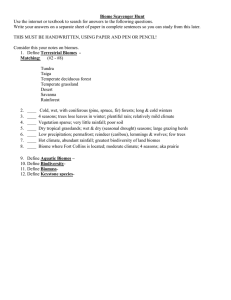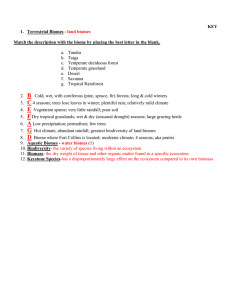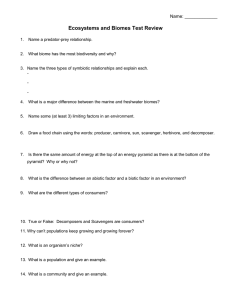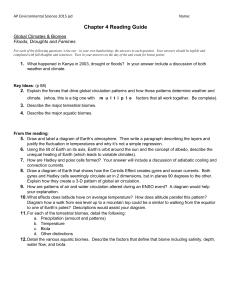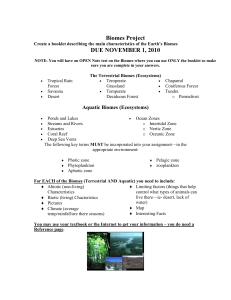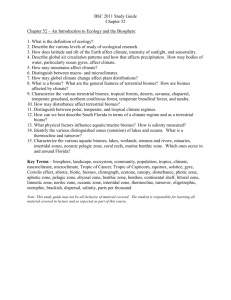Terrestrial Biomes: Climate & Plant Growth Worksheet
advertisement
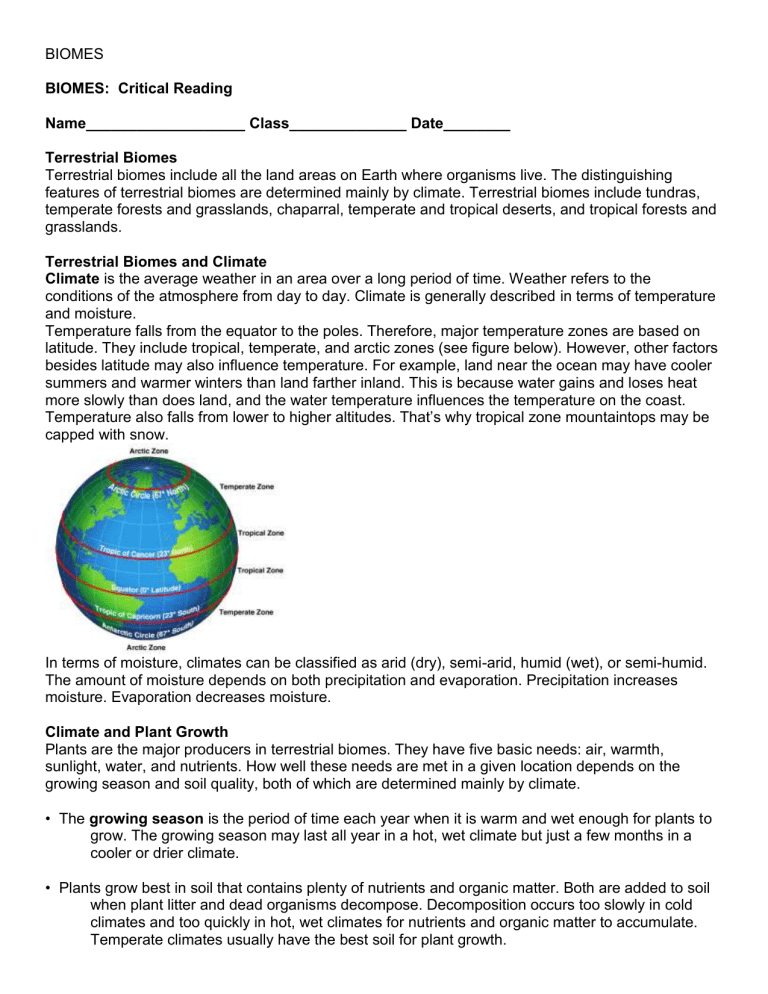
BIOMES BIOMES: Critical Reading Name___________________ Class______________ Date________ Terrestrial Biomes Terrestrial biomes include all the land areas on Earth where organisms live. The distinguishing features of terrestrial biomes are determined mainly by climate. Terrestrial biomes include tundras, temperate forests and grasslands, chaparral, temperate and tropical deserts, and tropical forests and grasslands. Terrestrial Biomes and Climate Climate is the average weather in an area over a long period of time. Weather refers to the conditions of the atmosphere from day to day. Climate is generally described in terms of temperature and moisture. Temperature falls from the equator to the poles. Therefore, major temperature zones are based on latitude. They include tropical, temperate, and arctic zones (see figure below). However, other factors besides latitude may also influence temperature. For example, land near the ocean may have cooler summers and warmer winters than land farther inland. This is because water gains and loses heat more slowly than does land, and the water temperature influences the temperature on the coast. Temperature also falls from lower to higher altitudes. That’s why tropical zone mountaintops may be capped with snow. In terms of moisture, climates can be classified as arid (dry), semi-arid, humid (wet), or semi-humid. The amount of moisture depends on both precipitation and evaporation. Precipitation increases moisture. Evaporation decreases moisture. Climate and Plant Growth Plants are the major producers in terrestrial biomes. They have five basic needs: air, warmth, sunlight, water, and nutrients. How well these needs are met in a given location depends on the growing season and soil quality, both of which are determined mainly by climate. • The growing season is the period of time each year when it is warm and wet enough for plants to grow. The growing season may last all year in a hot, wet climate but just a few months in a cooler or drier climate. • Plants grow best in soil that contains plenty of nutrients and organic matter. Both are added to soil when plant litter and dead organisms decompose. Decomposition occurs too slowly in cold climates and too quickly in hot, wet climates for nutrients and organic matter to accumulate. Temperate climates usually have the best soil for plant growth.
